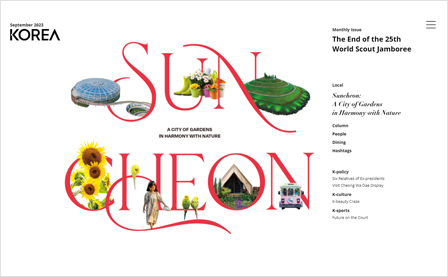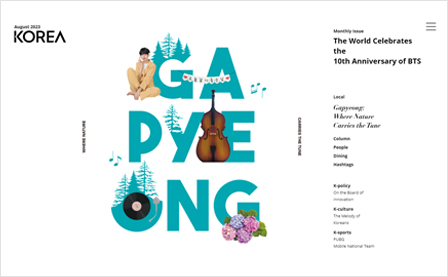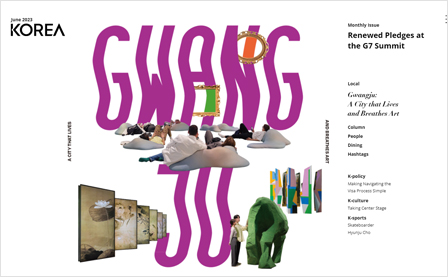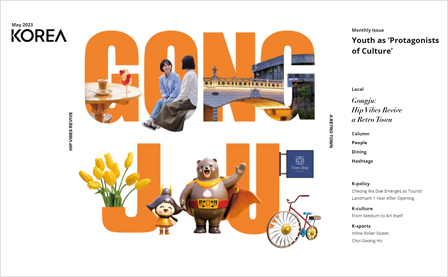October 2023

Local
People1
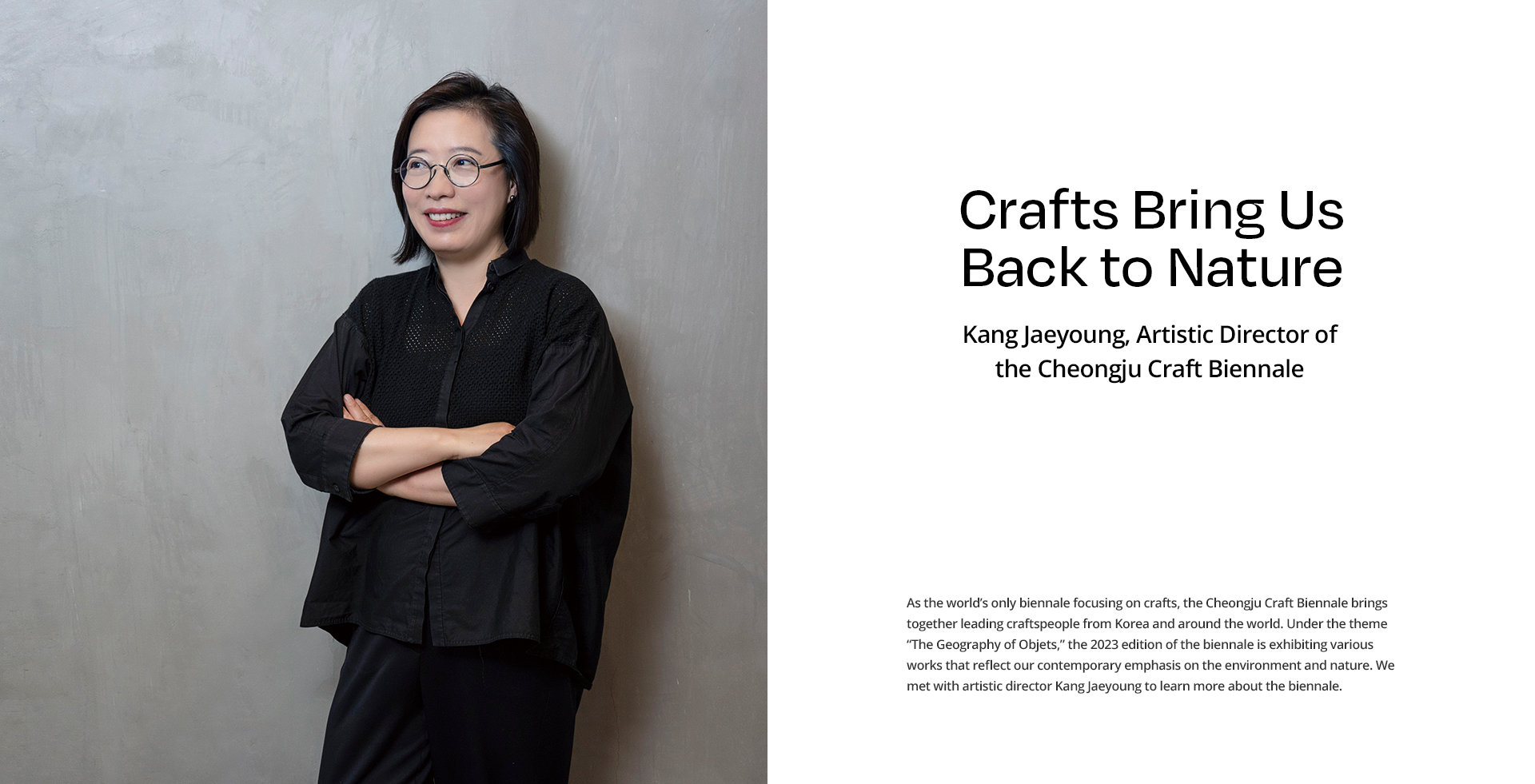
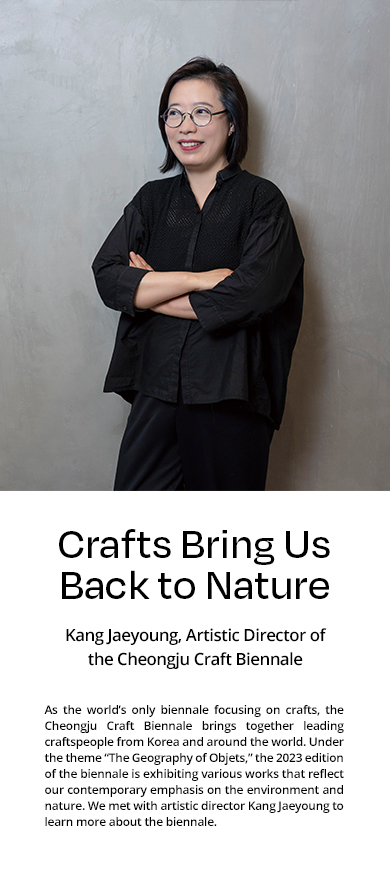
Doing Our Part for the Environment
The Cheongju Craft Biennale was launched in Cheongju, in 1999. For the past 24 years, it has been the world’s only biennial forum for discussing the aesthetics and values of crafts. Kang, who was selected to serve as the artistic director of this year’s biennale, is a curator who has directed craft shows in various countries spanning a wide range of genres.
“I wrestled with the question of how to illustrate the creative nature of art amid the COVID-19 pandemic. One of the leading characteristics of our era is the overwhelming amount of plastic waste. Given the crisis we’re currently facing, I asked myself what craftspeople can do for the planet. Crafts can be viewed and used for a long time, so I decided to showcase their value―what makes them so special,” Kang said.
This year’s biennale is divided into five sections that explore the value of crafts that are grounded in nature and the environment. Kang went to great lengths to line up the right group of craftspeople to achieve that goal.
“I concentrated on selecting artists that were appropriate for the theme. So, in this exhibition, I didn’t worry too much about whether artists in the lineup were from Korea or other countries. Notably, many of our artists are debuting new pieces, which makes the biennale even more special. Each piece occupies a beautiful spot in the exhibition.”
A Feast for the Senses
The most striking feature of the biennale is its festive atmosphere. The crafts on display aren’t the only thing to enjoy here: there are also academic conferences, workshops and performances. A new addition to this year’s biennale is a forum for meeting and conversing with artists.
Kang explained that all the senses―including sight, touch and smell―can be enjoyed at the biennale. “One of the qualities of crafts is that their distinctive physicality is best experienced through touch. In light of that, I hope our visitors will make use of all their senses, including sight, touch, as well as synesthesia, at the biennale.”
One thing festivalgoers won’t want to miss is an exhibition space that delves into Cheongju’s unique identity. “I wanted to give people a fuller picture of craftspeople in Cheongju, so I visited them and took videos of them doing their crafts. One of the most striking features of this exhibition is the pine scent you’ll encounter at the entrance. That makes it possible to experience their works through smell along with the other senses,” Kang said.
The subtitle of the main exhibition is “Living in the Net of Biophilia.” Along with glass, ceramics, fabrics and wood, plastic waste is also one of the materials that go into the crafts displayed at the biennale. As visitors use all five senses to marvel at these labors of love, they will find themselves falling in love with these artists’ crafts.
Running through Oct. 15, the Cheongju Craft Biennale offers a variety of ways to explore the future of craft.

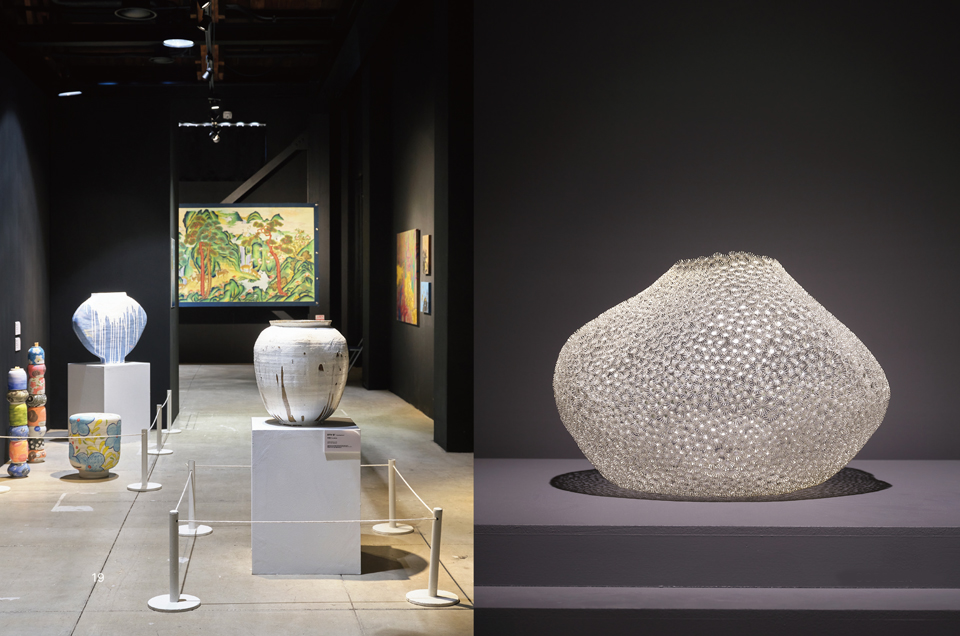

Local
People2

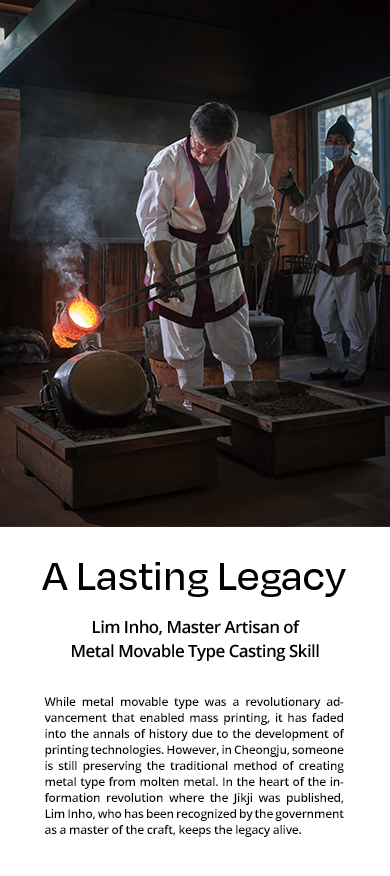
Korea’s Only Master Artisan of Metal Movable Type
Metal movable type is a printing technology that has had a massive impact on human history and development. It played a critical role in preserving and spreading knowledge and information; indeed, civilization as we know it today may never have flourished without it. That’s why metal movable type is regarded as one of the most important inventions in the history of civilization.
Lim Inho, a craftsman of Korean metal movable type, holds tight to the traditional methods of making type out of molten metal. He’s also the only person to be officially recognized as a master artisan of the art. “I started out by carving letters out of wood. It was after meeting my mentor Oh Guk-jin that I started making movable type. That’s when I became enchanted with its beauty,” he said.
Lim insists on making metal movable type in the same traditional methods used by Koreans of generations past. The two main casting methods involve beeswax and molding sand.
“In the beeswax casting method, characters are carved into beeswax which is then wrapped in clay and fired in the kiln. The beeswax then melts, leaving a cavity in the mold in which molten metal can be poured to form a movable type. In the molding sand method, letters are engraved in wood to form a matrix that’s then pressed into the molding sand. Those give you the molds that the molten metal can be poured into.”
Traditional methods are adhered to in every stage of the process: engraving the characters, melting the metal to make the type, filing down the type when it cools, and setting the type.
It’s quite common for Lim to cut his hand while engraving letters or to get scorched when sparks from the molten metal strike his clothing. But despite all that, he has stuck to his craft, carrying on the legacy of metal movable type. He is driven by the sense of accomplishment brought by completing a character.
“Once all the steps are done and a polished character is there in my hand, I can’t describe the feeling I get. That feeling is the reason I’ve been doing this work for more than 30 years now,” Lim explained.
Carrying on the Tradition
As part of his work on movable type, Lim has taken part in restoration projects that are historically meaningful for Korea. He has restored pamphlets published in the Joseon Dynasty, as well as the Jikji, the world’s oldest extant book printed with metal movable type.
Restoring the Jikji was an experience that Lim will never forget. “I was so focused on my work that I would often forget to sleep. To reach our goal of more than 30,000 characters, I had to make around 6,000 each year. I would make the characters in the daytime and then set them in the evening. It took me five years to finish the restoration. When I saw the vast amount of type in the finished version, I remember all I could think about was how beautiful it was.”
Lim busies himself with teaching the public more about metal movable type. Every Friday and Saturday, he demonstrates his craft to members of the public. He’s also working on passing down knowledge of the craft by letting people watch him cast type whenever they want on online.
Recently, Lim’s son has been working to inherit his father’s mantle as a master artisan of metal movable type. “I thought I would need to have a successor, someone to carry on the tradition of metal movable type. Fortunately, my son has agreed to be that successor, which means the legacy will live on. He intends to preserve the old ways while combining them with modern ones,” Lim explained.
Inheriting tradition amounts to taking the road less traveled. It’s difficult, lonely, even painful. But Lim keeps walking down that challenging road with the single-minded goal of sustaining the tradition. Even today, one of Korea’s greatest legacies is being restored in his hands.
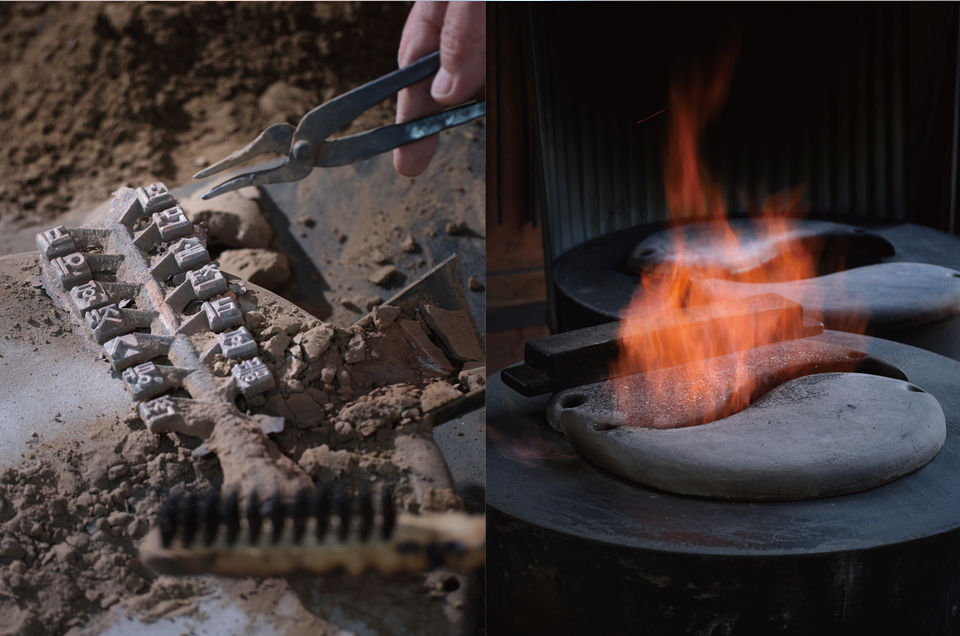
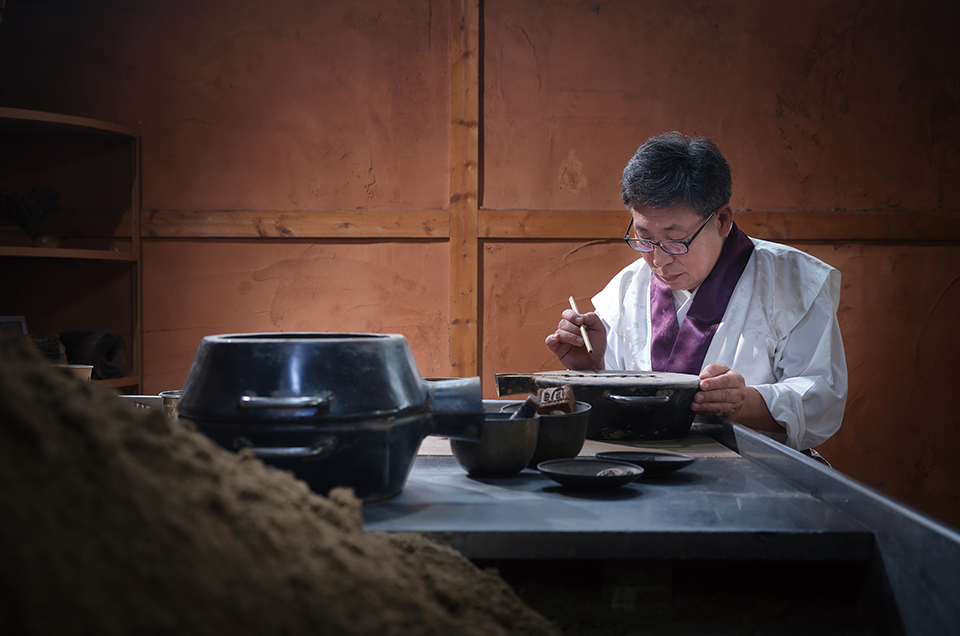

 View of all
View of all